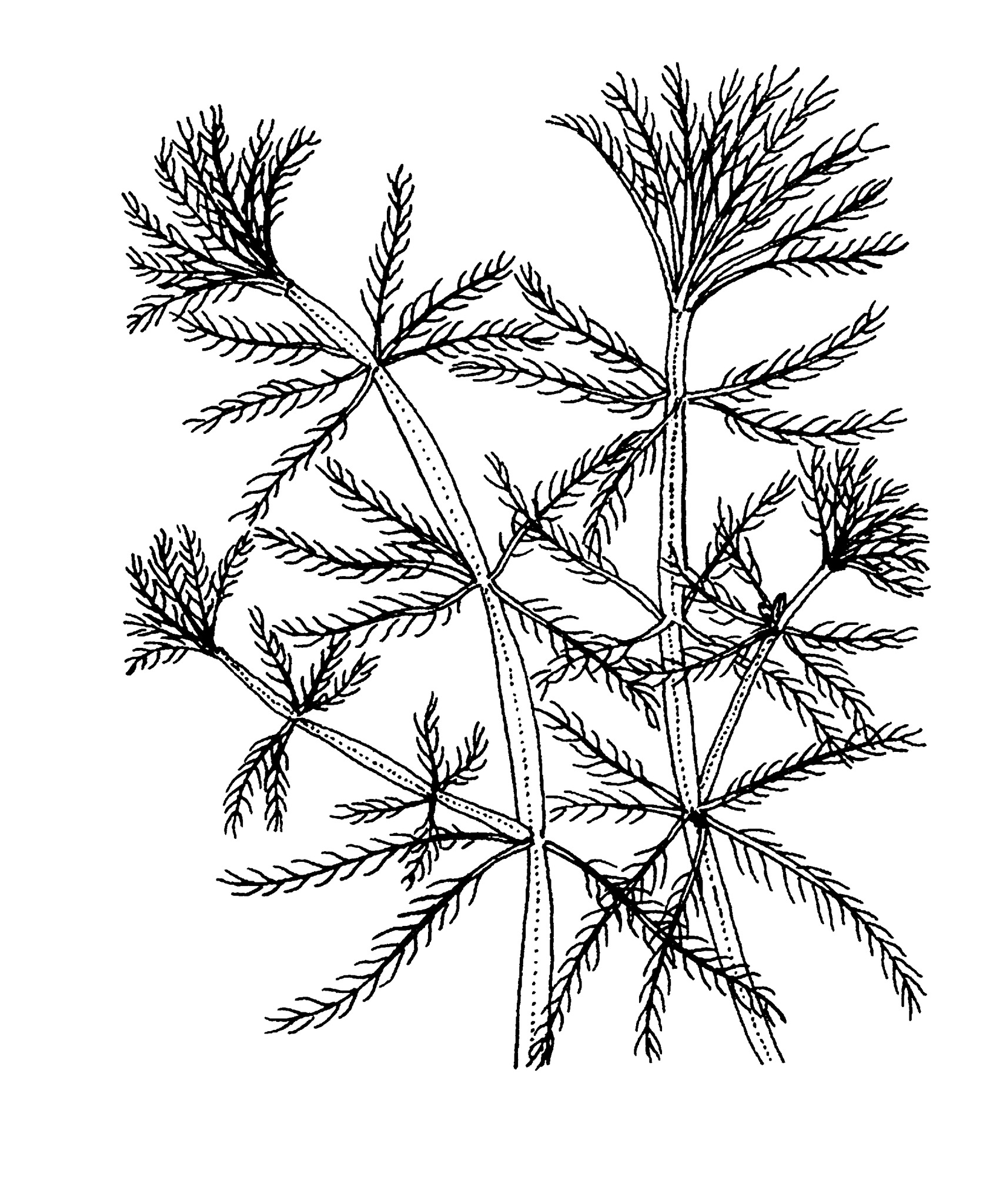
Aquatic or water-loving herbs, occasionally trees or shrubs. Leaves alternate, opposite or whorled, margins entire, toothed or deeply lobed; stipules absent. Flowers regular, mostly small and unisexual, solitary and axillary, or in terminal spikes or branched clusters. Sepals free, persistent in fruit. Petals free, larger than sepals or absent. Stamens same number or double that of the sepals, with short filaments and long anthers. Ovary inferior, (2-)4-chambered. Fruit a nut or drupe.
Generally considered closely related to the Saxifragaceae. The family name is often spelt Haloragidaceae.
9 genera and about 145 species; cosmopolitan but predominantly from the southern hemisphere. Australia has 6 genera and about 110 species.
Mostly aquatic plants with finely divided feather-like leaves.
Orchard (1980).
Source: (2002). Haloragaceae. In: . Horticultural Flora of South-eastern Australia. Volume 3. Flowering plants. Dicotyledons. Part 2. The identification of garden and cultivated plants. University of New South Wales Press.
